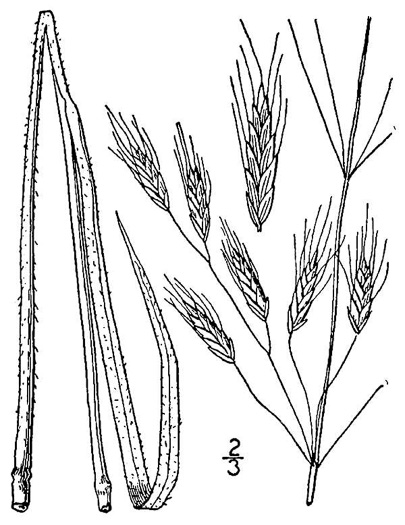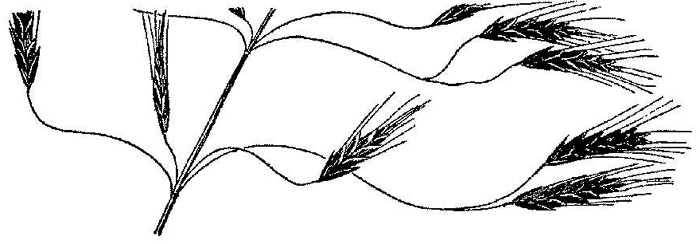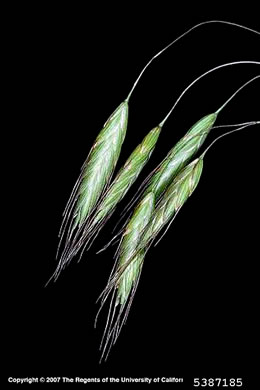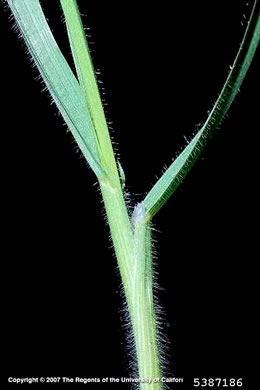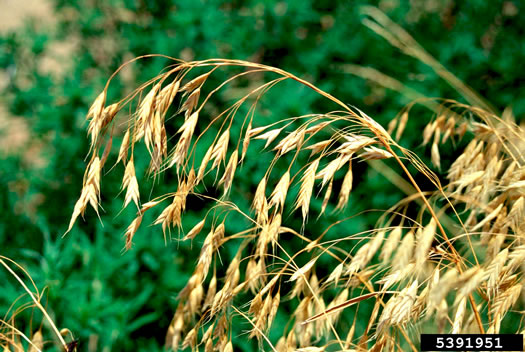Spermatophytes (seed plants): Angiosperms (flowering plants): Monocots: Commelinids: Poales
WEAKLEY'S FLORA OF THE SOUTHEASTERN US (4/24/22):
Bromus arvensis
FAMILY
Poaceae
Go to FSUS key
Dig deeper at SERNEC, a consortium of southeastern herbaria.
Check out EDDMapS.org to see where this has been reported.
SYNONYMOUS WITH
PLANTS NATIONAL DATABASE:
Bromus arvensis
FAMILY
Poaceae
SYNONYMOUS WITH Flora of North America north of Mexico, vol. 24 (2007)
Bromus arvensis
SYNONYMOUS WITH Manual of the Grasses of the US (Hitchcock & Chase, 1950)
Bromus arvensis
COMMON NAME:
Field Brome
To see larger pictures, click or hover over the thumbnails.
Joseph M. DiTomaso, University of California - Davis, Bugwood.org bug_5387185
Month Unknown
Resembling B. japonicus, spikelets thinner, flatter, often tinged w purple, per Manual of the Grasses of the United States (Hitchcock & Chase, 1950).
Joseph M. DiTomaso, University of California - Davis, Bugwood.org bug_5387186
Month Unknown
Foliage downy to subglabrous, per Manual of the Grasses of the United States (Hitchcock & Chase, 1950).
WEAKLEY'S FLORA OF THE SOUTHEASTERN US (4/24/22):
Bromus arvensis
FAMILY
Poaceae
SYNONYMOUS WITH
PLANTS NATIONAL DATABASE:
Bromus arvensis
FAMILY
Poaceae
SYNONYMOUS WITH
Flora of North America north of Mexico, vol. 24
Bromus arvensis
SYNONYMOUS WITH
Manual of the Grasses of the US (Hitchcock & Chase, 1950)
Bromus arvensis
If a search such as "Carex leptalea var. leptalea" doesn't deliver the results you want, try "Carex leptalea".
Or, to minimize chances of a misspelling, try just "Carex le".
Less is more: If "pencil flower" doesn't deliver the results you want, try "pencil".

